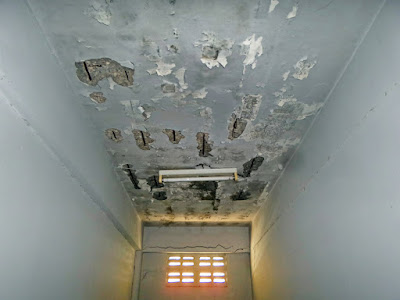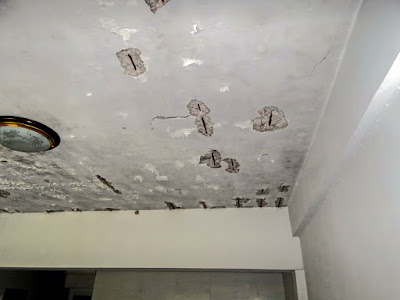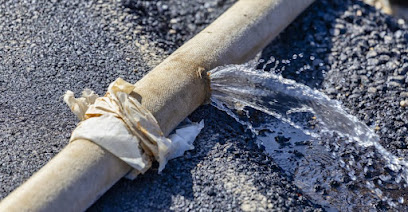How To Detect Leaks Under The Concrete Floor
How To Detect Leaks Under The Concrete Floor
Detecting leaks early can save you a lot of money and headache in the long run. If you have a concrete floor, there are some signs you can look for to determine if there is a leak. In this post, we will go over how to detect leaks under the concrete floor and some tips on how to fix them.
Image Source
Are you experiencing water damage, or even worse, mold damage in your home? If so, it’s likely that you have a leak somewhere in your property. In many cases, the leak is located under the concrete floor. Luckily, detecting and repairing leaks under the concrete floor is a relatively simple process. In this blog post, we will discuss how to detect leaks under the concrete floor, as well as how to fix them. Stay dry and mold-free this winter by following our tips!
One of the most common issues homeowners face during a house renovation is water leakage. Water leakage leads to mold and mildew growth which can cause damage not only to the drywall, flooring and insulation of your home but also result in health hazards caused by inhaling mold spores. In addition, water leaks can worsen over time if not identified promptly and repaired correctly. It is therefore important for homeowners to learn how to detect leaks under their concrete floor either from a wet basement or in an ongoing leak in a bathroom or kitchen.
If There's Water On The Ground In The Basement:
Generally, you should be able to identify where exactly the source of leakage is when there's pooling or dripping water on your floor. If there's a leaking pipe in the basement, locate it and turn off the main water valve to your home. If you can't find where the water is coming from, plug the drain holes of your washing machine and kitchen sink and check after each drain if there's any leakage in or around these appliances.
If you still haven't identified the source of leakage, use a hose to run water over the concrete floor. Walk everywhere on your property with this hose to look for places where there might be cracks or parts of your foundation that have sunken. Use a hammer drill to create holes on these suspect areas so that you can see beneath your concrete flooring. In addition, you can pour food coloring into suspected cracks before covering them so that you can easily see where the leaks are coming from when they start to appear on your concrete flooring.
There you have it, a few tips on how to detect leaks under the concrete floor of your home. For assistance with figuring out exactly which sources of leakage require attention in your house, contact a plumber or contractor for advice and assistance if needed.
Image Source
What Are The Signs Of A Leaky Concrete Floor And What Can You Do About It?
If your basement is flooding every time it rains, there's a good chance that you have one or more leaks in your home.
Leaks in basements can be caused by many things. Usually cracks in walls, poor drainage around the foundation outside, or faulty gutters are to blame for these problems. But how can you tell if it is something with your actual foundation? And should you try to fix it yourself or call a professional? Let's take a look at some common signs of leaking basements and what repairs should be handled by professionals and which ones should be done on your own.
1) Floor is Cold - If your basement floor is noticeably colder than the rest of the room, that may be an indication of moisture coming in from outside.
2) Floor is Wet - A concrete floor will almost always feel damp to the touch if water is seeping up under it like a leaky foundation would allow.
3) Musty Smell - Basements aren't known for their wonderful smells (especially after they're flooded), but if you notice mustiness down there more than usual, that's another clue that something isn't right with your basement walls or foundation perimeter.
4) Mold On Walls - Once mold starts growing on the walls, it can grow throughout your entire house within 24 hours if left untreated. That means, even though the leak may still be out of sight, your house is already beginning to be damaged by it.
5) Pooling Water On Floor - This is the most obvious sign of a leak, but luckily this one can easily be fixed with some waterproofing materials or even something as simple as putting some heavy furniture over the area.
Conclusion paragraph:
If you need to know how to detect leaks on a concrete floor, we can help. A leak is often the result of an underlying issue that needs to be rectified before it causes severe damage or flooding in the home. It may also indicate plumbing problems such as cracks and holes that allow water from your pipes into other areas of your property. To find out what’s causing these issues with your concrete floors, contact the EZ Leak Detection team today for professional advice and solutions delivered right away by one of our qualified technicians!
Author Bio:- Karl Brown
Karl, a marketing manager at EZ Leak Detection, loves to write about plumbing and HVAC services to make the life of the reader easier. Leakages in your property can be dangerous but not all the leaks are easily accessible. He has given extensive information about water leaks and slab leaks and tips to detect them quickly along with quick solutions to prevent you from inconveniences and health hazards.
Leakage problems and malfunction of appliances demand comprehensive solutions. Also, regular maintenance is not the thing to be missed for leading a life with zero hassles. Read our recent post related to leakage detection and repair, alerts for HVAC shutdown and how to repair it, and installation of AC and water heater in San Diego.





Comments
Post a Comment